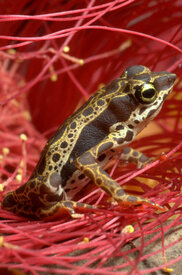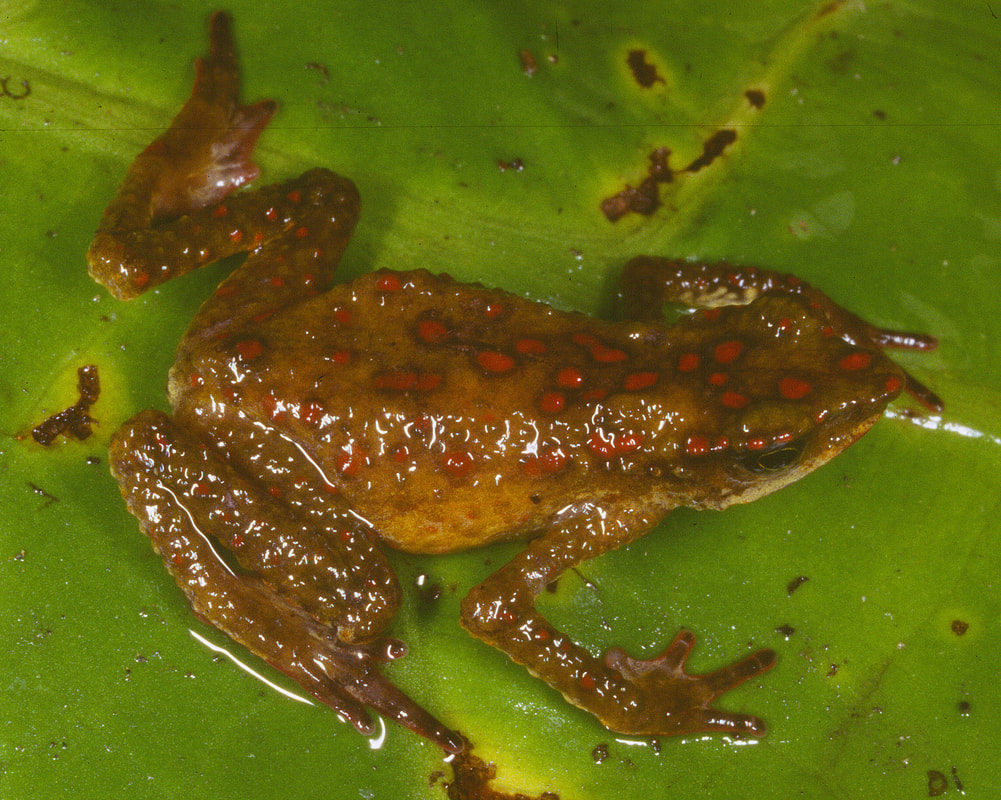
the amphibians are in. Various initiatives, at the global, regional and local scales have been founded to safeguard amphibian diversity including numerous management and action plans. Due to these activities, we massively augmented our knowledge about where declines happen, as well as the mechanisms behind these and how threats interact. This goes hand in hand with enormous
engagement for protecting natural habitats and accompanying captive breeding in conservation
facilities. Also, diseases and their agents are much better understood. There have been many stories of success and without all the investment, work and passion of dedicated actors many amphibian species would have become extinct by now!
colleagues, mostly conservationists and researchers from countries where harlequin toads naturally occur, compared population status data as of 2004 and of 2022 to examine species-specific trends over the last two decades. Data from the authors confirm that massive conservation efforts from many scientists, conservationists and local communities have revealed that more than 30 Atelopus species that in part were feared to have vanished are still there! However, evidence suggests that at the same time all species remain threatened and their conservation status has not improved. Factors threatening the remaining harlequin toads remain unchanged and include habitat change and chytrid fungus spread. In addition, the authors demonstrated that in the future harlequin toads suffer from climate change.
the amphibian crisis is still an emergency. Thanks to the tremendous strength put into conservation, by collaborative networks like the recently launched Atelopus Survival Initiative under the umbrella of the Atelopus Task Force of the IUCN Amphibian Specialist Group, these amphibians have not yet vanished. It is now more than ever critical to continue and increase efforts to escape the emergency the amphibian crisis still is.

 RSS Feed
RSS Feed